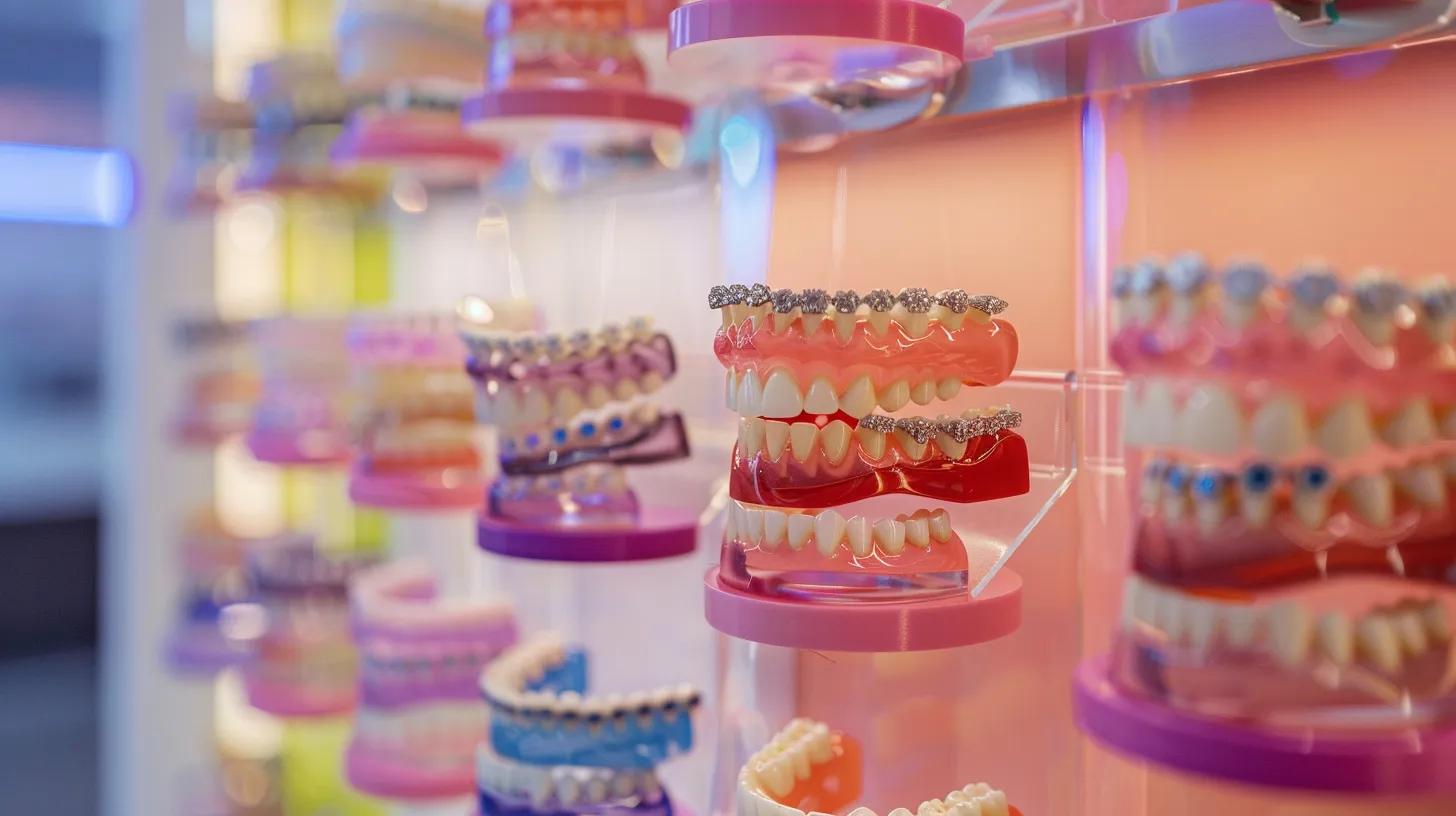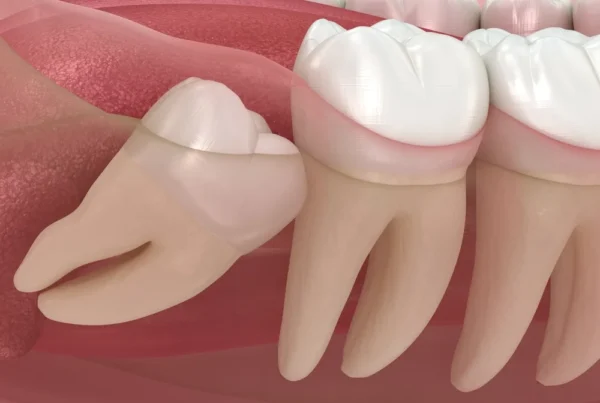When considering braces, many wonder, “Which option is best for my mouth?” Understanding the types of braces available can help answer this question. This article covers the different kinds of braces, tips for choosing the right one, and the treatment processes involved. Readers will gain clarity on their orthodontic choices and find solutions for achieving a straighter smile. For those looking for a dentist near them to request an appointment, especially for pediatric dentistry, this guide will lead the way in making informed decisions about braces.
Key Takeaways
- Understanding different braces options helps individuals find the best fit for their needs
- Traditional metal braces are affordable and effective for a wide range of orthodontic issues
- Clear aligners offer convenience and aesthetics, making treatment easier for active lifestyles
- Maintaining good dental hygiene is essential during any orthodontic treatment to prevent complications
- Consulting with a qualified dentist ensures personalized recommendations for achieving a healthier smile

Dentist Near Me: Understanding Braces Options
Understanding the different braces options is essential for anyone dealing with malocclusion. Traditional metal braces, often seen as standard, are effective and widely used. They offer reliable results, giving individuals the confidence they need in their oral health journey. If you’re searching for a dentist near me, don’t hesitate to request appointment to begin your treatment.
For those seeking a more discreet approach, clear braces present an excellent alternative. These clear aligners blend in with the teeth, making them less noticeable. This option helps individuals maintain their smile’s aesthetics while achieving the desired adjustments.
Accessibility to various braces options is a key factor in making a decision. Each option provides its own set of benefits and can cater to different lifestyles or preferences. Everyone’s orthodontic needs are unique, and understanding available choices can guide them in finding the best fit.
When ready to explore braces options, it’s simple to take the first step. Interested individuals can easily request an appointment to discuss which type suits their needs. Finding the right braces can lead to not just a straighter smile but also increased confidence in everyday life.
Choosing the right braces is key to a straight smile. Let’s look at the different types available and find the perfect fit for you.
The Different Types of Braces Available
Traditional metal braces offer affordability and are a reliable choice for many. For those wanting a more aesthetic option, ceramic braces blend functionality with a more natural appearance. Lingual braces provide correction from the inside, making them discreet. Lastly, braces clear aligners focus on convenience and comfort, appealing to a wide range of orthodontic needs. Each type ensures effective care for teeth and gums.
Traditional Metal Braces Offer Affordability
Traditional metal braces stand out as a cost-effective choice for many patients seeking orthodontic treatment. These braces are sturdy and provide dependable results, making them a go-to option for individuals of all ages, including children visiting a pediatric dental office. By opting for metal braces, patients can effectively address issues like malocclusion, enhancing their dental health and overall confidence without breaking the bank.
Another advantage of traditional metal braces is their widespread availability and ease of scheduling. Many dental offices, including those specializing in orthodontics, offer these braces as a standard treatment option. The combination of affordability and accessibility ensures that patients can embark on their path to a healthier smile while minimizing potential dental diseases associated with misalignment.
Ceramic Braces Blend Aesthetics and Functionality
Ceramic braces are a fantastic choice for those looking for an option that balances aesthetics and functionality. Unlike traditional metal braces, ceramic braces blend in more naturally with the teeth, making them less noticeable. This feature is especially appealing for teenagers and adults who prefer a more discreet treatment while still effectively straightening their teeth, improving jaw alignment, and promoting better oral health.
Moreover, ceramic braces often come with similar care instructions as their metal counterparts, meaning patients will need to brush effectively to maintain their dental hygiene. Many dental offices offer free consultations to help individuals determine if ceramic braces are the right fit for them. The blend of affordability, appearance, and effectiveness makes ceramic braces a popular choice among those seeking orthodontic solutions.
Lingual Braces Provide Discreet Correction
Lingual braces offer a unique solution for those seeking orthodontic correction without the visibility of traditional metal braces. Positioned on the back of the teeth, they provide a discreet option for patients who want to avoid the attention often associated with braces. This makes them particularly appealing for adults and teenagers concerned about aesthetics while still achieving effective orthodontic treatment.
For individuals who may experience anxiety about dental visits or have a toothache when thinking about braces, sedation options can help make the process more comfortable. Patient information is essential when considering lingual braces, as they require specific care and maintenance. However, the blend of invisibility and functionality can lead to improved oral health and confidence, making them worthwhile for many seeking orthodontics services.
Clear Aligners for Convenience and Comfort
Clear aligners are becoming increasingly popular for individuals seeking an orthodontic solution that emphasizes convenience and comfort. Unlike traditional metal braces, these aligners are removable, allowing users to easily maintain their dental care routines, including teeth cleaning. This feature is especially appreciated by parents visiting a pediatric dentist, as it simplifies the process of keeping their child’s teeth healthy during treatment.
Moreover, clear aligners provide a comfortable fit, reducing the irritation often associated with metal brackets and wires. Their custom design allows for subtle adjustments without compromising daily activities, making them ideal for busy lifestyles. Many people find that this flexibility and comfort lead to a more positive orthodontic experience, as they can continue enjoying life while working towards a straighter smile.
Now that the different types of braces are laid out, it’s time to think about what fits best. The right choice can make all the difference in your journey to a healthier smile.
How to Choose the Right Type of Braces
Choosing the right type of braces involves assessing individual dental needs and goals, including factors like hygiene to prevent tooth decay. Understanding lifestyle and personal preferences also plays a vital role, especially for pediatric patients. Lastly, budgeting for orthodontic treatment is essential to ensure an effective and comfortable journey to a healthier smile.
Assessing Your Dental Needs and Goals
When determining the right type of braces, assessing individual dental needs is key. For instance, individuals with more severe orthodontic issues may benefit from traditional metal braces due to their reliability and effectiveness. It’s also wise to consult with a dentist who specializes in dental public health; they can provide personalized recommendations that align with specific goals, whether the focus is on aesthetics or functionality.
Budgeting for braces involves considering varying costs, including potential dental insurance coverage. Options like metal braces often come at a lower price point than more aesthetic choices. It’s essential to factor in the total treatment plan, which might include future dental procedures or even surgery, to achieve a complete dental transformation.
Considering Your Lifestyle and Preferences
When considering braces, it’s essential to factor in lifestyle and personal preferences. For instance, busy individuals may appreciate clear aligners, which allow for easy removal and better oral hygiene. Those with active lifestyles might lean towards traditional metal braces for their durability, ensuring they remain intact during sports or daily activities.
Additionally, financing options for braces can greatly influence choices. Families exploring pediatric dental services may want to invest in more aesthetic options that instill confidence in younger patients about their smile. Understanding these aspects not only helps individuals make informed decisions but also ensures a positive orthodontic experience while preventing potential issues like tooth loss in the future.
Budgeting for Your Orthodontic Treatment
When it comes to budgeting for orthodontic treatment, understanding the costs associated with different types of braces is crucial. Traditional metal braces often offer a more affordable option compared to ceramic braces or clear aligners, making them accessible for many families. Individuals should consider their financial situation and explore whether dental insurance can help cover some of the treatment costs to make the process more manageable.
Investing in braces is not solely about the initial pricing; it’s important to look at the overall treatment plan. Patients might want to factor in potential follow-up visits or additional procedures that could arise during treatment. Searching for dental offices that offer flexible financing options or payment plans can create a smoother path toward achieving that healthier smile without financial stress:
- Evaluate the costs of different braces options.
- Consider potential insurance coverage.
- Look for flexible payment plans.
- Factor in follow-up visits and additional treatments.
Once the right type of braces is selected, the next step unfolds. Understanding the treatment process will reveal how these options work to achieve that perfect smile.
Treatment Process With Different Braces Types
The treatment process for braces involves several key steps. Initially, an appointment includes a thorough consultation and digital imaging to assess individual needs. Following that, a fitting and adjustment schedule is established to monitor progress. After treatment completion, the retention phase ensures that results are maintained, providing lasting benefits to oral health and aesthetics.
Initial Consultation and Digital Imaging
During the initial consultation, a dentist will evaluate the patient‘s dental health and discuss their specific goals for orthodontic treatment. This meeting is crucial for understanding unique needs and finding the best braces option, whether traditional metal braces or clear aligners. By asking questions and encouraging open communication, the dentist ensures a tailored approach to the individual’s journey toward a healthier smile.
Digital imaging plays a key role in this initial phase, as it allows the dentist to create a detailed view of the patient‘s teeth and jaw structure. This technology helps in planning the treatment effectively, as it provides precise measurements. Patients can leave the consultation feeling informed and confident about the path forward, knowing that their dental team is equipped with the best tools for their care.
Fitting and Adjustment Schedule
The fitting and adjustment schedule for braces plays a vital role in the orthodontic treatment process. Initially, after the braces are placed, patients typically return for follow-up appointments every four to eight weeks. During these visits, the dentist will assess progress and make any necessary adjustments to ensure the teeth are moving as planned, addressing concerns or discomfort that may arise.
Throughout the treatment, maintaining regular check-ups helps keep the process on track and can contribute to a more efficient timeline for achieving that perfect smile. Patients can expect to discuss their experiences, share any issues they face, and receive guidance on proper care between appointments. Here’s a look at what the fitting and adjustment schedule generally entails:
Retention Phase After Treatment Completion
The retention phase is a crucial part of the orthodontic journey, especially after completing treatment with braces. During this stage, retaining the new position of the teeth is essential to prevent them from shifting back to their original alignment. Patients will typically receive retainers, which can be removable or fixed, tailored to their specific needs based on the type of braces they previously used. Regular follow-ups during this period ensure the retainers are effective and that the smile stays in its ideal position.
Staying committed to the retention phase is vital for long-term results and overall dental health. Patients should follow their dentist’s instructions regarding how long to wear their retainers daily and when to attend follow-up appointments. By keeping up with this phase, individuals can maintain their straighter smiles, boosting their confidence and minimizing potential future orthodontic issues. Here’s a quick overview of the steps involved in this phase:
- Receive retainers after braces are removed.
- Follow the dentist’s instructions for retainer use.
- Attend follow-up appointments for progress checks.
- Maintain good oral hygiene while wearing retainers.
Understanding the treatment process with each type of brace raises many questions. What do people really want to know about braces? Let’s find out.
Common Questions About Braces
When considering braces, it’s common to have questions about the journey ahead. Many wonder, “How long will I need to wear braces?” and whether there are dietary restrictions to keep in mind. Additionally, understanding the cost differences among various braces types can help with budgeting. Exploring these topics will provide valuable insights for anyone navigating their orthodontic treatment.
How Long Will I Need to Wear Braces?
The duration for wearing braces can vary significantly based on individual needs and the type of orthodontic treatment chosen. Generally, most people will wear braces for about 18 months to 2 years. Factors like the severity of dental issues, age, and adherence to care recommendations all play a role in how long treatment may take.
It’s important to note that after braces are removed, a retention phase begins to help maintain the teeth’s new positions. This can involve wearing retainers for a prescribed duration, which may last several months to a few years, depending on the patient‘s specific needs. Consulting with an orthodontist will provide personalized insights and expectations for the treatment timeline.
Are There Dietary Restrictions With Certain Braces?
Individuals with braces often need to pay attention to their diet to avoid complications during treatment. Hard, sticky, or chewy foods can damage braces or hinder the adjustment process, leading to longer treatment times. For instance, popcorn, gum, and crunchy fruits might need to be minimized to preserve the integrity of the brackets and wires.
For those with clear aligners, the dietary restrictions are much more flexible since these aligners are removable. Users can simply take them out during meals, allowing the freedom to enjoy a variety of foods without the risk of damage. However, it’s still important to maintain good oral hygiene and avoid sugary drinks to keep teeth healthy while undergoing orthodontic treatment.
What Is the Cost Difference Among Braces Types?
The cost of braces can vary widely depending on the type chosen. Traditional metal braces typically represent the most affordable option, making them accessible for many families. In contrast, ceramic braces and lingual options usually come at a higher price due to their aesthetic appeal and positioning, respectively, which can influence the overall orthodontic budget.
When considering clear aligners, costs can also fluctuate based on the complexity of the treatment plan. It’s essential for individuals to consult with their dental professional to gain a clearer perspective on estimated costs and potential insurance coverage. Understanding these financial aspects will help guide patients toward the best choices for their smile goals:
- Traditional Metal Braces: Generally the least expensive option.
- Ceramic Braces: Offer a natural look at a moderate cost.
- Lingual Braces: Positioned behind the teeth and typically the most costly.
- Clear Aligners: Price can vary based on treatment complexity.
Getting braces is just the beginning of the journey to a great smile. Next, it’s time to find the right dentist nearby who can guide you through this process smoothly.
Finding a Dentist Near Me for Braces
When searching for a dentist nearby for braces, it’s essential to check their qualifications and experience to ensure expert care. Reading reviews and testimonials can also provide insights into patient satisfaction and treatment results. Finally, scheduling a consultation at a local practice allows individuals to discuss options in detail and find the best fit for their orthodontic needs.
Importance of Checking Qualifications and Experience
When seeking a dentist for braces, checking their qualifications and experience is important. A well-trained and experienced orthodontist can provide insights into the specific types of braces available and recommend the best option based on individual dental needs. Patients should look for dentists who are certified and have a solid track record in delivering successful orthodontic treatments.
Experience also plays a significant role in how comfortable a patient feels during the process. Knowing that a dentist regularly handles cases similar to theirs can alleviate anxiety and build confidence in the treatment journey. It’s beneficial for individuals to schedule a consultation to discuss their concerns and gauge the dentist’s approach, ensuring they find the right fit for their orthodontic needs.
Reading Reviews and Testimonials
Reading reviews and testimonials is a valuable step when searching for a dentist who offers braces. Potential patients can gain insights into how other individuals feel about their experiences, from the overall satisfaction with treatment to the comfort level within the office. This feedback can shed light on the effectiveness of different types of braces, helping families make informed decisions that align with their needs and preferences.
Furthermore, reviews often highlight the quality of patient care provided by the dental team. Prospective patients can learn about how welcoming the office environment is, the professionalism of the staff, and the dentist’s communication style. This information helps to ensure that individuals feel comfortable discussing their orthodontic options, making the journey towards a healthier smile less daunting.
Scheduling a Consultation at a Local Practice
Scheduling a consultation at a local dental practice is a straightforward step for those exploring braces options. During this initial visit, patients can discuss their orthodontic concerns and preferences with an experienced dentist who specializes in braces. This opportunity not only allows individuals to gain insight into the types of braces available but also helps establish a comfortable relationship with the dental team.
Moreover, the consultation serves as a chance for patients to ask questions about the treatment process, costs, and expected results. It’s essential to choose a practice that prioritizes patient education and makes the experience enjoyable. By taking the time to schedule a consultation, individuals set the foundation for their journey towards a healthier smile with the right braces for their unique needs.
Conclusion
Want a better smile and healthier teeth? Come to Grand Prairie Family Dentistry. Under Dr. Behrooz Khademazad, we offer top-notch restorative treatments. Need crowns, bridges, or other procedures? Our skilled team is ready to help.
Restorative dentistry improves both tooth function and appearance. We aim for smiles that are beautiful and healthy. We’re here to support you throughout the process.
Here’s our approach for the best results:
- Consultation: Dr. Khademazad examines your teeth and discusses options.
- Personalized Plan: We create a plan tailored to your needs and goals.
- Advanced Care: We use the latest technology and materials for comfort and effectiveness.
What are you waiting for? Book an appointment with Grand Prairie, TX’s top Invisalign dentist, Dr. Khademazad, today. It’s the first step to a better smile and increased self-esteem. Act quickly to enjoy a beautiful, straight smile without the pain of traditional braces. Call us at 972-988-0900.
Schedule Your Consultation Today!







